How to Start a Kitchen Garden
If you want to grow your own fresh food but you’re not sure you have enough space or time, the kitchen garden is a perfect option for you.
Often, when we consider starting a garden, we think we don’t have enough space. But having a garden doesn’t mean you need acres of land. It simply means you may need to get a little creative with the space you have.
Or maybe you think gardening will take more time than you have. Again, kitchen gardening is the perfect solution.
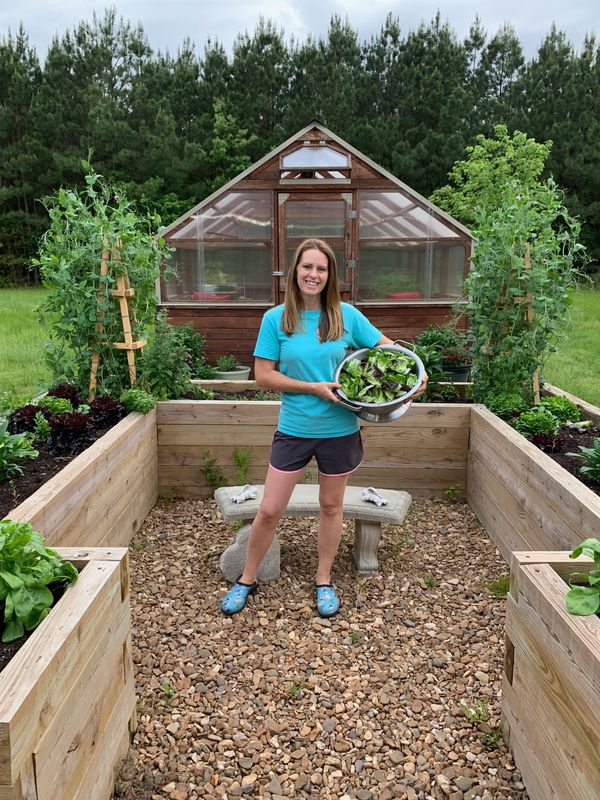
But how do you even get started with a kitchen garden? On this podcast episode with Nicole Burke, author of Kitchen Garden Revival, she and I discuss how to get started. You can listen to our conversation below or keep reading for the highlights.
What is a Kitchen Garden?
Kitchen gardens differ slightly from field gardens you may think of when the word “gardening” comes to mind.
Crops grown kitchen gardens are usually selected for fresh eating. The focus is usually on fresh fruits, vegetables, and herbs. The crops grown in a kitchen garden are generally harvested on an almost daily basis.
Long-term storage and preservation crops are usually left for the larger gardens.
Kitchen gardens, mainly due to their natural proximity to your home, also tend to be more formal and aesthetically pleasing.
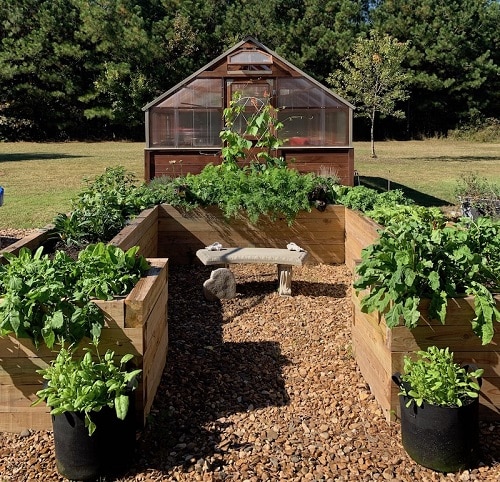
What plants can you grow in a kitchen garden?
When we only have a small space to garden in, it’s important that we pick plants that will give us the most bang for our buck. In the kitchen garden, you want to pick smaller plants that produce heavy crops.
Herbs for the Kitchen Garden
Both annual and perennial herbs are great choices for the kitchen garden, especially for beginners:
- Basil
- Cilantro
- Dill
- Parsley
- Thyme
- Sage
- Oregano
- Rosemary
(Avoid mint, unless you keep it in its own container, as it will spread in a raised bed and overpower the rest of the area.)
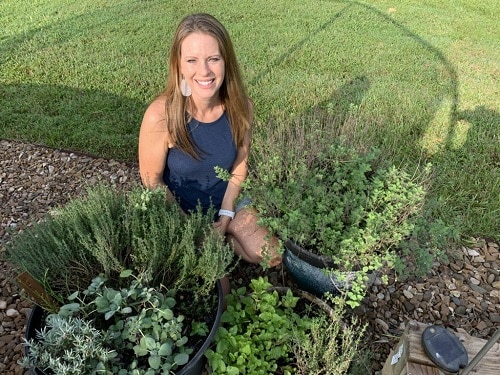
What vegetables should you avoid planting in a kitchen garden?
Keeping in mind the goal of choosing small yet productive plants, you want to avoid vegetables that take up a lot of space for little yield:
- Broccoli
- Cauliflower
- Brussels Sprouts
- Corn
- Zucchini
It’s not that you can’t grow these; they’re just not the best choice to maximize the small space of a kitchen garden. Most of these only produce one harvest per plant and have a long growing season, tying up coveted garden space for a long period.
One year I grew a zucchini plant in my elevated raised bed kitchen garden, and you can see how much space it took up!
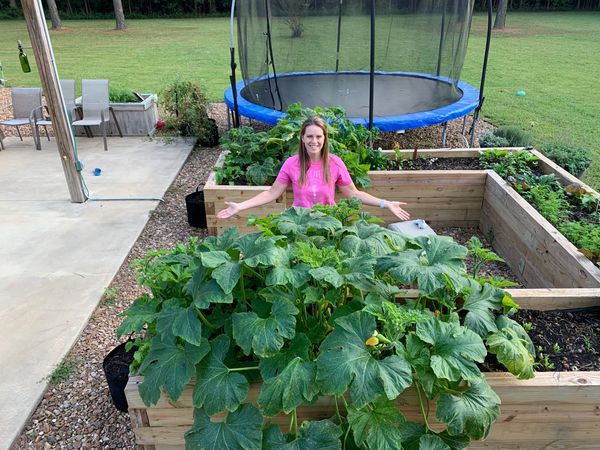
Best Vegetables for the Kitchen Garden
The ideal vegetables for a small kitchen garden are the ones that produce continuously and take up a small amount of space.
- Lettuce
- Kale
- Mustard Greens
- Spinach
- Arugula
- Peas
- Cherry tomatoes (with trellis)
- Cucumbers (with trellis)
- Beans
- Peppers
Most of these crops will grow all season long (either in the cool or the warm season), and harvest continually. These will always have a place in my kitchen garden.
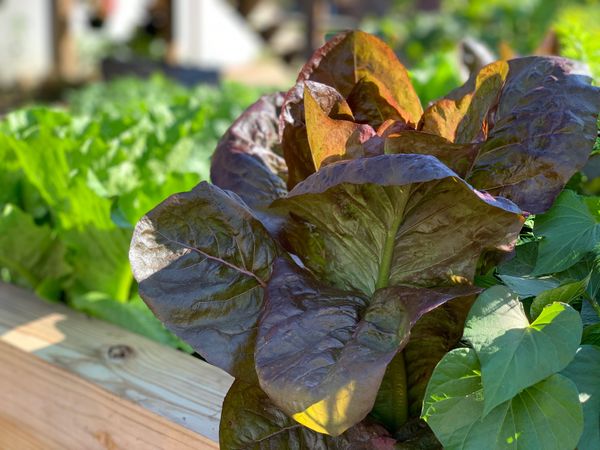
How do you get started creating a kitchen garden?
Once you start to dream of different crops you can plant and grow in your kitchen garden, how do you get started — especially in creating the garden space?
Consider raised beds or containers
For most people, kitchen gardens are smaller, closer to the house, and planted in raised beds or containers. This makes tending to the garden easier and enjoyable, and by using raised beds, you can select high quality soil blends that produce more food in less space.
You can certainly grow a kitchen garden directly in the ground, especially if your soil is naturally rich, but ground beds tend to require more maintenance and upkeep, making raised beds more common for today’s kitchen gardens.
Here are the main reasons raised beds are ideal options for kitchen gardens:
Quality Soil in Raised Beds
Filling your raised bed up with quality soil is a quick way to get started on a kitchen garden. If you have space for a compost pile, that’s excellent, but don’t fret if you don’t. A topsoil and compost blend (like mentioned in this raised bed soil options guide) is a quick way to start a fast-growing garden.
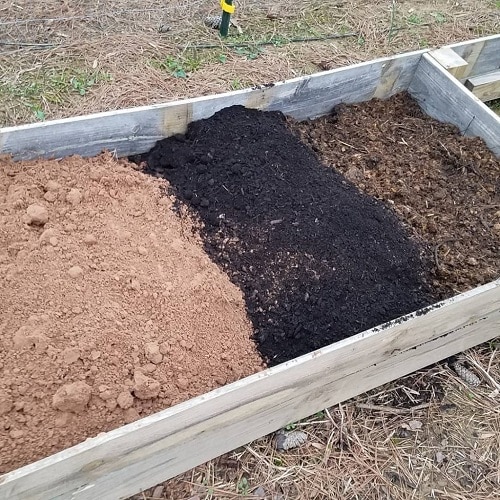
Drainage
There are a lot of places in my own garden where drainage is poor. Drainage is critical for a thriving vegetable garden, as the majority of the plants we produce can’t survive with wet roots. Containers and raised beds help eliminate this issue.
Aesthetically Pleasing
When you live in a city or a close neighborhood, making sure you have an aesthetically pleasing garden is sometimes a requirement (consider HOAs). Raised beds and containers are easy on the eye and make for the perfect kitchen garden space.
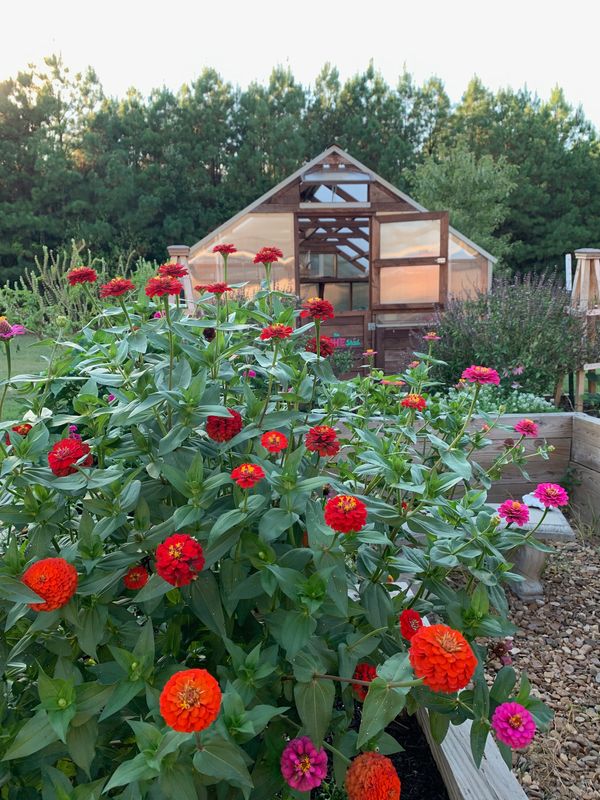
Find Your South
If you live in the Northern Hemisphere, identify which direction is south. Then, identify any obstacles between your potential garden space options and south. Those obstacles could shade your garden and you want to avoid that if possible.
Pick the garden space that has the most southern exposure possible. Keep in mind the summer and winter solstice as well. The angle of the sun and its position in the sky in the summer isn’t the same as what it will be in the spring and fall.
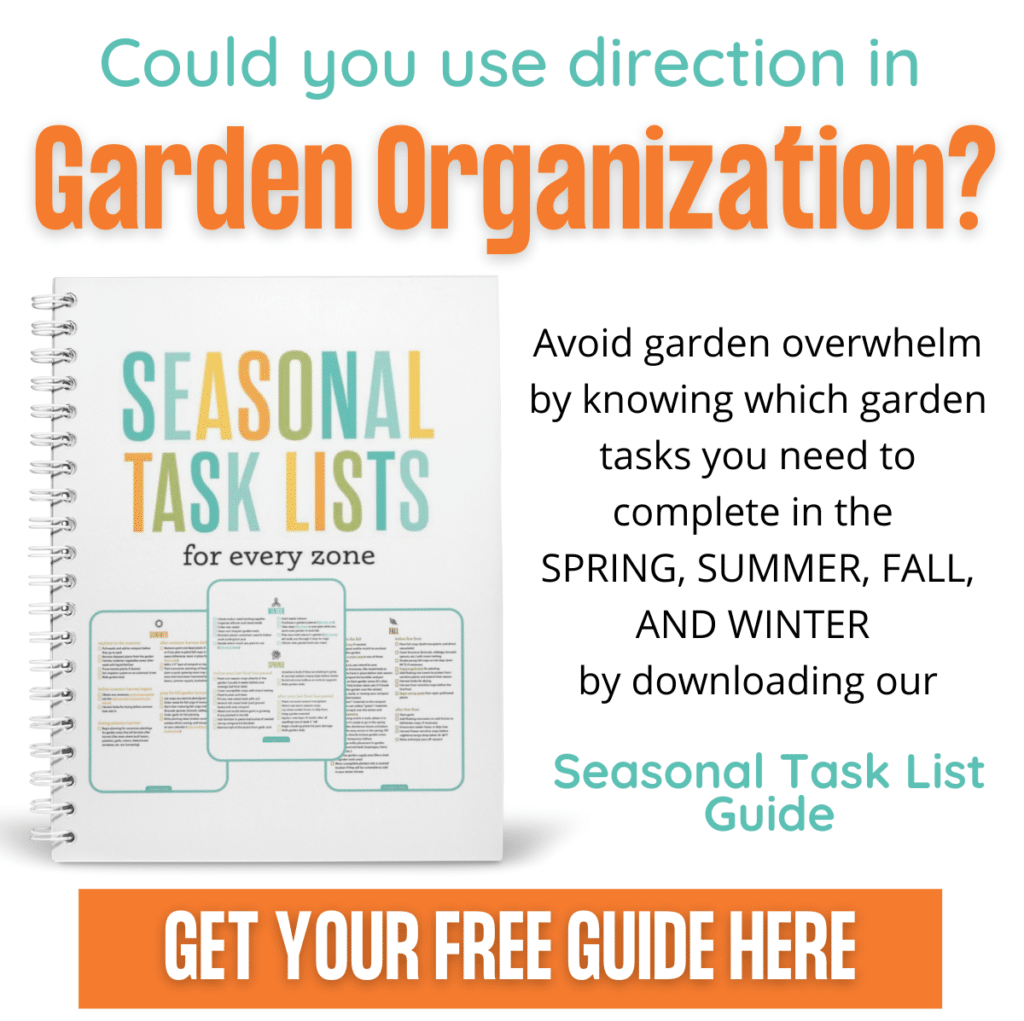
Add Vertical Elements
For many gardeners, they can exponentially increase the quantity of harvest by planting vertically in their raised beds. If you’re new to a kitchen garden, consider cattle panels, trellises, etc. in your raised bed. This will allow you to plant more crops in the same space and ultimately maximize the total harvest.
What kind of trellis should you use in your kitchen garden? It depends on a few factors.
If you can only access your bed from 3 of 4 sides (for example, if your bed is next to a fence), consider a paneled trellis or a cattle panel on the fence side. You would then want to plant your smallest plants (such as herbs) up front, your medium plants in the middle and then your vining plants in the back where they can climb up your trellis.
If you can access your raised bed from all 4 sides, consider using an obelisk trellis in the middle of your bed. This allows you to grow vertical crops up the trellis while growing other plants beneath and beside it.

If you have multiple raised beds, consider using an arched trellis where you put one side of the trellis in one bed, and the other side in the neighboring bed. This truly allows for maximum planting.
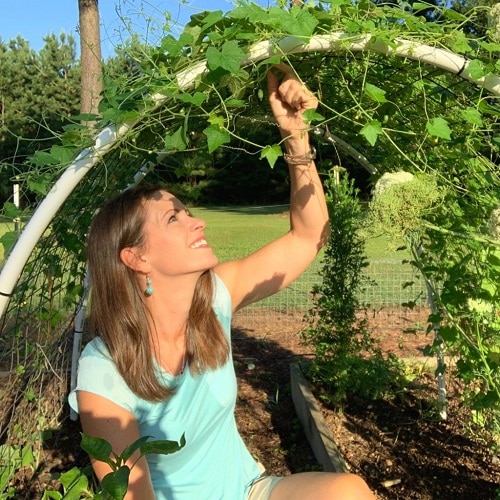
Prune and harvest often
Because we are planting a lot of plants in a smaller space, pruning is essential. Pruning needs to be done weekly to make sure that your plants are not competing with one another. Trim back what you can as often as you can.
Plot out your highs and lows
A key to maximizing harvest from a kitchen garden is to grow crops during the seasons where they thrive. How do you know when cool weather crops and warm weather crops grow best?
Jot down your average high and low temperatures each month of your garden season. This will allow you to know which months are cold, cool, warm, and hot. Knowing this, you can plant each month of your kitchen garden according to what will grow well in those temperatures.

You can take this a step further and then remove any plants that, while may still be growing, won’t perform their best in that season. This will then free up that garden space for plants that will thrive in that season.
Just Start Somewhere
Kitchen gardening doesn’t have to be hard. In fact, it’s the perfect way to begin your garden adventure without all the work and effort of a typical field garden.
Start simple with the herbs and vegetables you like to eat fresh, and you can always expand later. (Trust me, you will.)
Most gardeners I know with even a small kitchen garden are some of the happiest gardeners I know! Nothing beats walking a few steps and harvesting a meal or a side dish right outside your door!
Do you get overwhelmed with garden planning?

Subscribe here for my best tips to plan your garden in just 7 days -- all for FREE.
Plus, I'll send you my "In the Garden E-mail" on Fridays, periodic updates on garden resources relevant to you, and you'll receive access to my entire bank of free garden downloads!
You are also agreeing to our privacy policy.

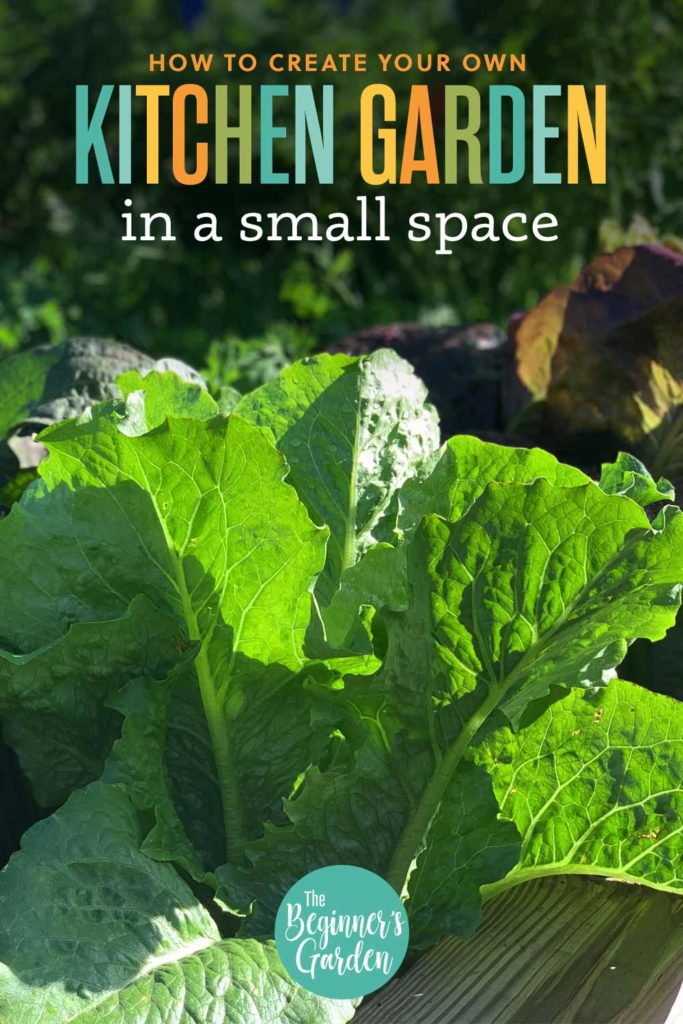
Hi Jill
I’m a 3rd generation gardener. My family grew veggies to survive the depression, WWll and all the years following. I learned a lot from Dad and friends but never stopped leaning. I started raised beds 10 yrs ago but I have to say your kitchen garden is the best. I live in a planned community and everyone expects me to grow good stuff but to make it look pretty. That raised bed off your patio is just what i need to do. Thanks and keep on sharing.
PS carrots will grow in a bag but dont use the sand your plow guy uses….salt is a killer. Hahaha
Mrs G
I chose to grow Tulsi also called Holy Basil. And many of the tips mentioned in this article are relevant. One thing I was looking for is, list of all possible symptoms, and its cause so I can find remedies for growing Tulsi and Holy Basil and found this https://drtulsi.com which I would say is very specific. Is there anything like this available for cilantro as well?